Hornblende: About Hornblende
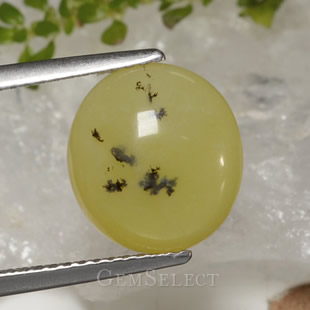 |
| Moss Opal |
Hornblende makes up an important group of amphibole inosilicate rock-forming minerals. Its interesting name is derived from combining the German words 'horn', after its color, and 'blenden' - meaning 'deceiver', in reference to its deceptive similarity to other metal ore minerals. The hornblende series of minerals ranges from iron-rich ferro-hornblende to magnesium-rich magnesio-hornblende and in general, its chemical formula is given as (Ca,Na)2-3(Mg,Fe,Al)5(Al,Si)8O22(OH,F)2.
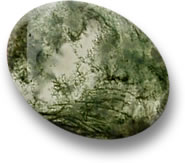 |
| Moss Agate |
Hornblende is the most abundant amphibolite (amphibolite is metamorphic rock that is composed of amphibole and plagioclase) and is known to have a large number of important industrial purposes. In the gem industry, hornblende is mostly famous for being an impurity included in other gemstones, but on rare occasion, some especially fine hornblende crystals may be cut and polished as gemstones. Pure hornblende crystals are considered infrequent and are primarily sought after only by the most avid of collectors.
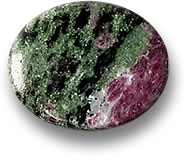 |
| Ruby-Zoisite |
Rock that is composed mostly of hornblende is sometimes traded as "hornblendite" and may occasionally be used for ornamental gemstone carvings. Moss opal and moss agate are gemstone varieties prized for their distinct green hornblende inclusions, and in some cases, the fern-like 'dendrites' in dendritic agate, dendritic chalcedony and dendritic opal may actually be composed of hornblende rather than traces of iron or manganese, though both types of inclusion can have a similar appearance. Hornblende inclusions are also often found in zoisite varieties including ruby-in-zoisite or 'anyolite'. Hornblende is also a major constituent of granite rock, so it is an important material for the production of granite tiles, countertops and railroad ballast.
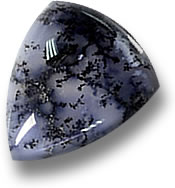 |
| Dendritic Chalcedony |
Hornblende has a Mohs scale hardness rating that ranges from just 5 to 6, which is similar to turquoise. Its specific gravity is roughly comparable to spodumene and diaspore, but depending on its exact chemical composition, its density can range from 2.9 to 3.4. Hornblende forms in the monoclinic crystal system with translucent to near-opaque clarity. It is strongly pleochroic and its colors can range from light-green to dark-green and from brown to black. Hornblende may sometimes be mistaken for black biotite mica and other ore minerals because of its shiny luster and color, which is usually owed to traces of iron.
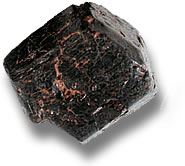 |
| Hornblende Rough Crystal |
Since hornblende is known to form in the same types of igneous and metamorphic rocks as various pyroxenes, it may also be confused with a variety of other materials that occur in similar geological conditions. Hornblende and other amphibole silicates, such as actinolite, nephrite and riebeckite, all have very similar gemological properties to members of the pyroxene family of gemstones, including enstatite, omphacite and jadeite. Amphiboles can usually be distinguished from similar pyroxene gemstones through distinct cleavage angles alone. Amphibole silicate gemstones also usually form with longer and thinner crystals compared to pyroxene minerals, and pyroxenes lack hydroxyl (OH), an important element and constituent found in all amphibole silicates including hornblende.
Hornblende deposits can be found all around the world. Some of the most important sources include Bohemia, Canada (Ontario), the Czech Republic, Italy (Mount Vesuvius and Montenero di Bisaccia), Norway, Sweden and the United States, including New Jersey and New York.
|
